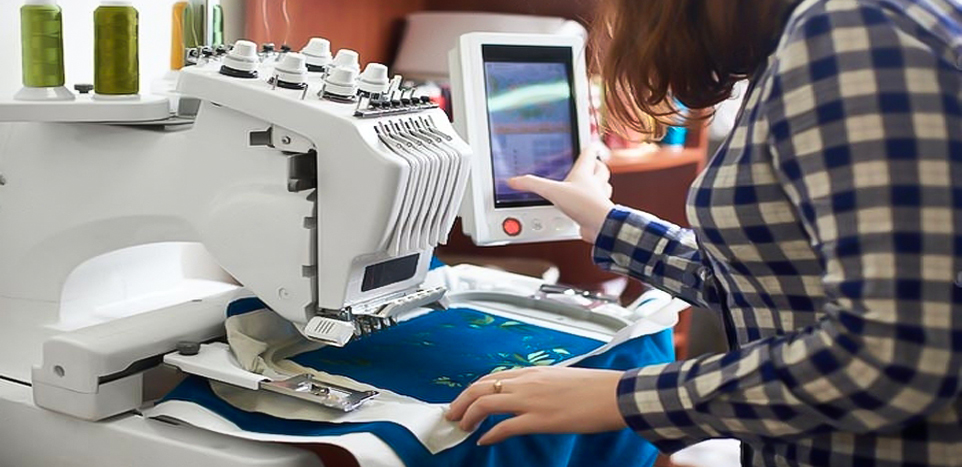
The Art of Embroidery Digitizing: A Comprehensive Guide
Embroidery has a rich history dating back centuries, and in the modern age, it has seamlessly blended traditional craftsmanship with cutting-edge technology. One of the key advancements in this field is embroidery digitizing, a process that transforms intricate designs into digital formats that embroidery machines can understand and replicate. This comprehensive guide delves into the art of embroidery digitizing, exploring its techniques, tools, and the creative mastery that brings embroidered designs to life.
Table of Contents
1. Understanding Embroidery Digitizing
-
- The Fusion of Art and Technology
- Importance of Digitizing in Modern Embroidery
2. The Digitizing Process
-
- Design Analysis and Preparation
- Stitch Types and Their Effects
- Thread Selection and Color Matching
- Underlay Stitches: The Foundation of Quality
- Pathing and Stitch Sequence
- Machine Compatibility and Limitations
3. Tools of the Trade
-
- Embroidery Digitizing Software
- Graphic Design Software
- Digitizing Tablets and Equipment
4. From Pixels to Threads: Artistic Considerations
-
- Understanding the Relationship Between Pixels and Stitches
- Translating Artistic Concepts into Embroidery
- The Digitizer's Role as an Artist
5. Customization and Personalization
-
- Monogram Digitizing: A Personal Touch
- Creating Custom Designs for Individual Clients

1. Understanding Embroidery Digitizing:
Embroidery digitizing is a complex and intricate process that lies at the intersection of artistry and technology. It involves transforming visual designs, logos, and artwork into a digital format that can be read and executed by computerized embroidery machines. This process is the bridge that allows intricate and detailed designs to come to life on fabric, creating beautifully embroidered garments, accessories, and other items.
-
The Fusion of Art and Technology:
At its core, embroidery digitizing is a harmonious fusion of artistic creativity and technological precision. Designers and digitizers collaborate to translate artistic concepts into a language that machines can understand. This collaboration requires a deep understanding of both visual aesthetics and the mechanics of embroidery machinery.
-
Importance of Digitizing in Modern Embroidery:
In the modern era, where customization and uniqueness are highly valued, embroidery digitizing plays a pivotal role. It enables businesses, individuals, and organizations to reproduce intricate designs with precision and consistency. From corporate logos on uniforms to personalized monograms on gifts, digitizing ensures that every stitch aligns perfectly, creating a professional and polished appearance.

2. The Digitizing Process:
Embroidery digitizing involves a series of meticulous steps, each contributing to the final result:
-
Design Analysis and Preparation:
Digitizers start by analyzing the design or artwork provided. They assess factors such as size, complexity, and color gradients to determine how to best translate the design into stitches.
-
Stitch Types and Their Effects:
Different stitch types, including satin stitches, fill stitches, and running stitches, are chosen based on the design's elements. Each stitch type imparts a unique texture and effect to the final embroidery.
-
Thread Selection and Color Matching:
The choice of thread colors is crucial for maintaining the design's visual integrity. Digitizers select thread shades that closely match the original artwork, ensuring a faithful representation.
-
Underlay Stitches: The Foundation of Quality:
Underlay stitches are laid down before the main stitching to provide stability and prevent fabric distortion. Proper underlay stitching enhances the design's overall quality.
-
Pathing and Stitch Sequence:
Creating a logical stitching sequence minimizes thread travel and optimizes production time. Efficient pathing ensures a clean and coherent embroidery.
-
Machine Compatibility and Limitations:
Digitizers consider the embroidery machine's capabilities and limitations, ensuring that the design fits within the available hoop size and stitch count.
3. Tools of the Trade:
Embroidery digitizing is a sophisticated process that bridges artistry and technology, transforming visual designs into stitch commands that embroidery machines can execute. To accomplish this intricate task, skilled digitizers rely on a range of specialized tools that help them translate creative concepts into beautifully embroidered reality. Here are the key tools of the trade that embroidery digitizers utilize:
-
Embroidery Digitizing Software:
The cornerstone of the digitizing process is specialized embroidery digitizing software. These software packages provide a platform for digitizers to input, manipulate, and fine-tune designs. Digitizing software offers features like stitch editing, pathing control, stitch type selection, and color management. Some popular digitizing software includes Wilcom EmbroideryStudio, Hatch Embroidery, PulseID, and Floriani Total Control.
-
Graphic Design Software:
Prior to digitizing, many designs start as visual artwork created in graphic design software like Adobe Illustrator or CorelDRAW. Digitizers use these tools to create or refine the original design, ensuring it's ready for translation into stitches. Graphic design software allows for precise control over shapes, colors, and layout before moving into the digitizing software.
-
Digitizing Tablets and Equipment:
Some digitizers prefer to work with digitizing tablets and styluses that offer a more tactile and natural way to input design details. These tablets allow digitizers to directly draw or trace designs on a screen, simulating the experience of sketching on paper. Wacom tablets are a popular choice for this purpose.
4. From Pixels to Threads: Artistic Considerations:
Embroidery digitizing is an art form that involves translating intricate visual designs into stitch patterns that can be woven into fabric using embroidery machines. This creative process requires not only technical expertise but also a deep understanding of the relationship between digital design and physical threads. From pixels to threads, embroidery digitizing involves a series of artistic considerations that contribute to the final beauty and quality of the embroidered piece.
-
Understanding the Relationship Between Pixels and Stitches:
The journey from a digital image to an embroidered design begins with pixels. Pixels are the smallest units of a digital image, and each pixel carries color and tonal information. Embroidery digitizers need to understand how pixels translate into stitches, where each stitch represents a portion of the original pixel's color and shading.
-
Translating Artistic Concepts into Embroidery:
Embroidery digitizers are not just technicians; they are artists who bridge the gap between the virtual and the physical. They analyze the visual design, considering factors such as color gradients, texture, and visual effects. This analysis guides them in selecting stitch types, stitch density, and the sequence of stitches.
-
The Digitizer's Role as an Artist:
Stitch types play a crucial role in replicating the texture and depth found in the original design. For instance, satin stitches are often used for smooth and glossy surfaces, while fill stitches create a textured appearance. By choosing the right stitch types, digitizers add layers of dimensionality that give life to the embroidered piece.
5. Customization and Personalization:
In a world where individuality is celebrated, customization and personalization have become key elements in various industries. In the realm of embroidery digitizing, these concepts take centre stage, allowing individuals and businesses to create unique and meaningful designs that reflect their identities and messages. Let's explore how customization and personalization are harnessed in embroidery digitizing:
-
Monogram Digitizing: A Personal Touch:
Monogramming is a classic example of personalization in embroidery. By combining initials or names into a design, monogram digitizing adds a personal touch to garments, accessories, and household items. It's a timeless way to create items that are intimately connected to the individual, making them feel special and unique.
-
Creating Custom Designs for Individual Clients:
Embroidery digitizing allows designers to cater to the specific preferences of individual clients. This is particularly valuable for businesses that provide bespoke services or personalized products. By collaborating with clients, digitizers can create designs that encapsulate their visions and turn them into tangible embroidered pieces.

0 Comments